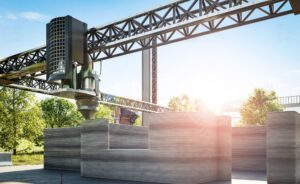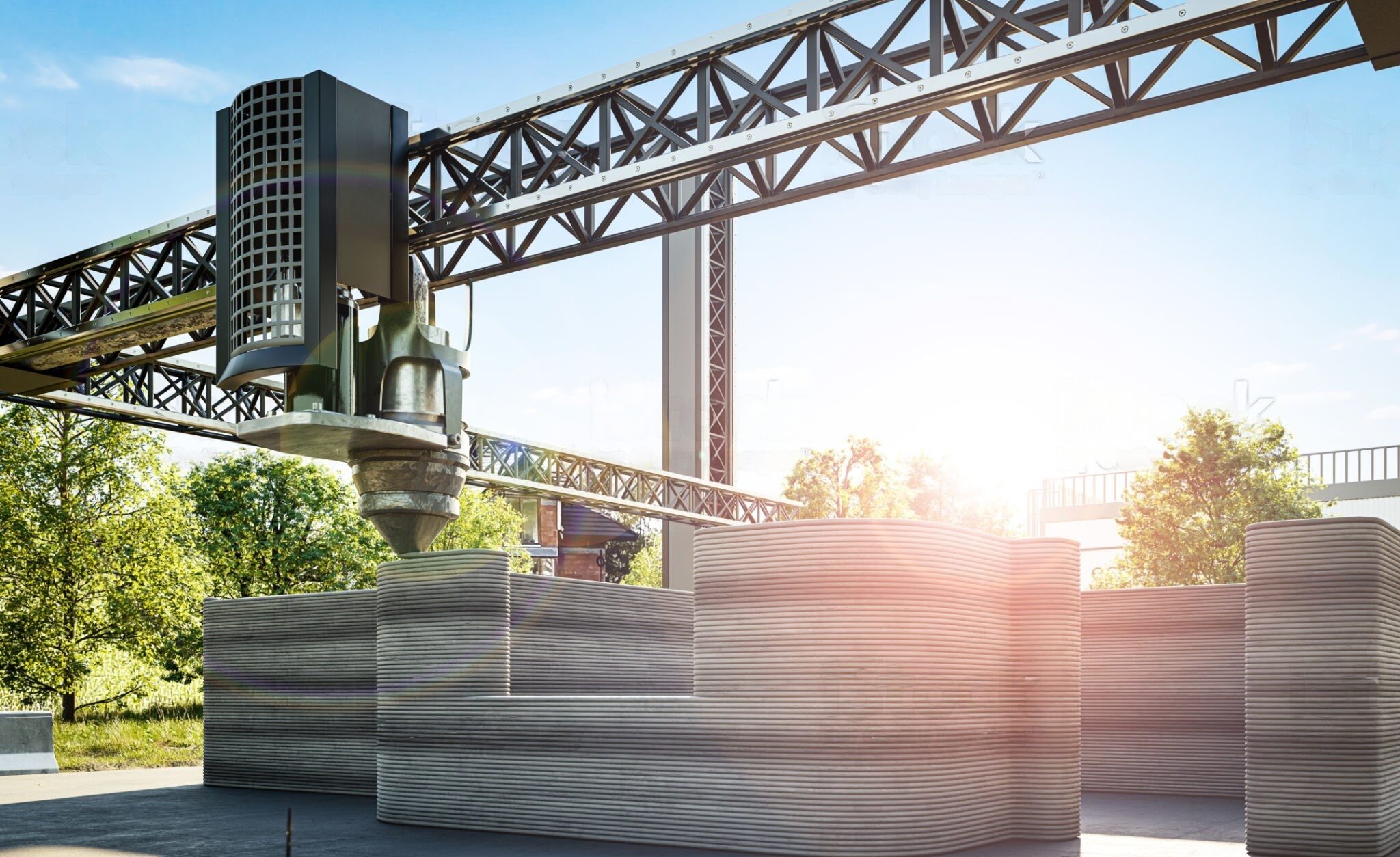
Concrete-3D printing, also known as additive-manufacturing of concrete, is an innovative construction technology that uses specialized 3D-printers to create three-dimensional concrete structures layer after layer. It involves the precise deposition of concrete-materials, often in a predetermined pattern, to build complex and customized architectural elements.
Concrete-3D printing typically involves the following steps:
- A digital model of the desired structure is created using computer-aided design (CAD) software. This digital model serves as a base for generating the instructions for the 3D-printer.
- A specialized concrete mix is prepared, taking into consideration factors such as the desired strength, workability, and printability. The concrete-mix may incorporate additives or fibers to enhance its properties and ensure proper flow during printing.
- The 3D-printer, equipped with the nozzle or extruder, deposits the concrete material layer after layer based on the digital design. The printer is guided by computer-controlled movements to ensure precise deposition and adherence of each layer.
- Additional reinforcement such as steel bars or mesh, may be manually inserted during process of printing to provide additional strength and structural integrity to the printed elements.
- Specialized techniques, such as vibration or chemical bonding agents, may be employed to promote strong bonding between the successive layers of printed-concrete.
- After process of printing, the printed-structure undergoes the process of curing to allow the concrete to gain strength and durability. Depending on the project requirements, additional finishing treatments such as smoothing, texturing, or painting may be applied.

